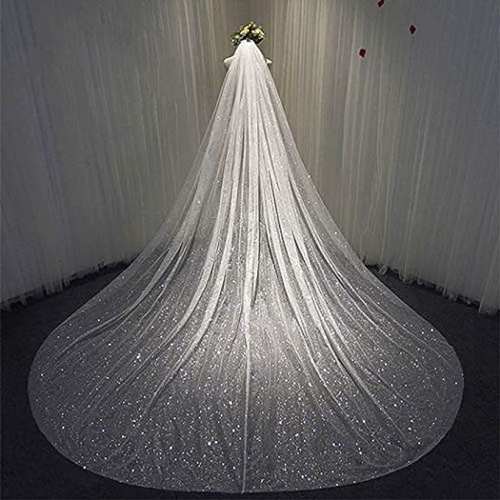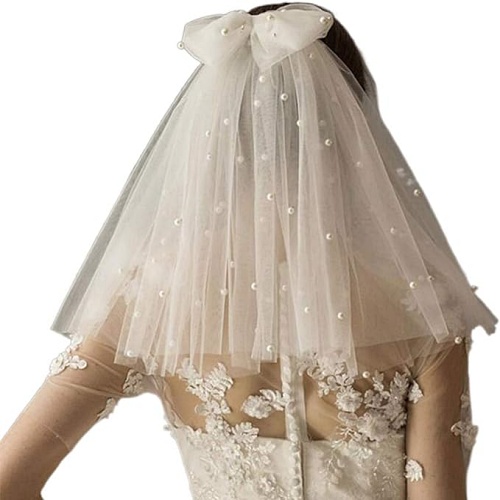Bridal Veils – We usually get this question from brides looking for long, full-length veils. What they’re trying to figure out, essentially, is the length of the train they have on their dress so they can buy the appropriate length veil to match with it.
There are three standard full-length Bridal Veils
Floor length, chapel length, and cathedral length. We’ve dug through our real bride hair accessories archives to find some examples of each train length and decoration paired with its perfect matching veil and shoes so you can hopefully get a sense of where on this scale your own dress and jewelry fits.
Single tier wedding veils– These are what most people imagine when asked to picture a veil. Single tier means that the veil flows from it’s attachment point (normally a comb) down the back. There is no blusher, section of veil in front of the face. These can have a full gather or no gather at all like our ‘barely there veils’. See real brides wearing single tier veils.
A cathedral veil delivers an unforgettable statement that’s classic like table numbers and a touch regal. With yards and yards of fabric extending from the comb, your veil will trail gracefully beyond your dress’s train as you move to the tableware.
These days, brides are expected to refrain from this traditional accessory entirely.
Still, there are explanations for why even the most contemporary bride would like to wear a wedding veil. The most common reason is that the right veil compliments your dress and can complete your whole look.
When it comes to styling your wedding day look, don’t forget about the wedding veil! The wedding veil is one of the most important details to finalize. Making sure your veil matches your dress, earrings and overall look is imperative.
A formal veil that extends to the floor, the chapel falls two-and-a-half yards from the headpiece. It’s often worn in combination with a sweep train and blusher for extra oomph.


















